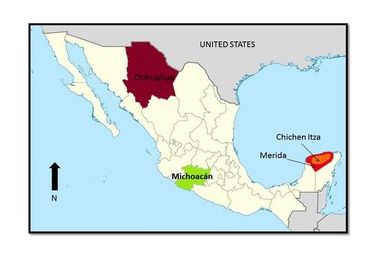
"There has long been a school of thought that there was little physical variation prior to European contact," study researcher Ann Ross, a forensic anthropologist at North Carolina State University, said in a statement.
"But we've found that there were clear differences between indigenous peoples before Europeans or Africans arrived in what is now Mexico."
In other words, the researchers say there is not one phenotype, or bundle of physical characteristics, for all native people - contrary to earlier studies that looked at hair color, skin color and body form, and concluded that physical variation among indigenous Mexican people was modest.
Through some forensic sleuthing, Ross and colleagues discovered differences between geographically separate groups in the shapes in their cheekbones, the bones surrounding their eyes and the bridge of their nose, before they ever made contact with Westerners.
The researchers examined dozens of pre-Columbian skulls found in Mexico, including bones from the iconic Maya city of Chichen Itza in the Yucatan Peninsula and remains of people from the Tarascan culture much farther inland, in the Michoacan state. The team also looked at the skeletons of people of Spanish origin, African Americans and contemporary Mayans for comparison.
Statistical analyses of the facial landmarks on the skulls showed differences between indigenous populations in different parts of Mexico. The skulls in the Michoacan sample were especially distinct from the other Mexican samples, which the researchers believe is in line with previous findings that suggest the Tarascans were a culturally and linguistically distinct group that may have been more aligned with other groups in South America.
"This makes it clear that there was no clear, overarching phenotype for indigenous populations," study researcher Ashley Humphries, a doctoral student at the University of South Florida, said in a statement. "All native peoples did not look alike."
Their findings were detailed this month in the International Journal of Osteoarchaeology.



or "Africanus" were already on the continent long before Columbus got lost. The Olmec heads tell us quite vividly.